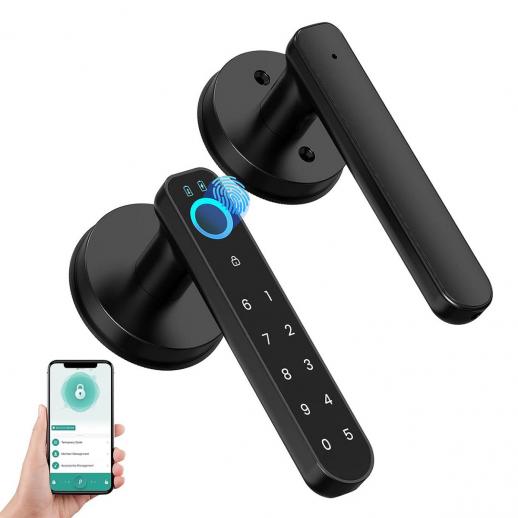How To Turn Off Smart Lock?
In today's digital age, security and convenience often go hand in hand. One of the features that exemplifies this balance is the Smart Lock on Android devices. Smart Lock allows users to keep their devices unlocked in certain trusted situations, such as when they are at home or connected to a trusted Bluetooth device. While this feature can be incredibly convenient, there are times when users may want to turn it off for added security or personal preference. This article will guide you through the process of turning off Smart Lock on your Android device, addressing common concerns and providing practical solutions.

Understanding Smart Lock
Before diving into the steps to disable Smart Lock, it's essential to understand what it is and how it works. Smart Lock is a feature introduced by Google that allows your Android device to remain unlocked in specific, user-defined situations. These situations can include:
1. Trusted Devices: Your phone stays unlocked when connected to a trusted Bluetooth device, such as a smartwatch or car audio system.
2. Trusted Places: Your phone remains unlocked when you are in a trusted location, like your home or office.
3. On-Body Detection: Your phone stays unlocked while it is on your person, such as in your hand or pocket.
4. Voice Match: Your phone unlocks when it recognizes your voice.
5. Trusted Face: Your phone unlocks when it recognizes your face.
While these features can be convenient, they may also pose security risks if your device falls into the wrong hands. Therefore, knowing how to turn off Smart Lock is crucial for maintaining control over your device's security.
Steps to Turn Off Smart Lock
Turning off Smart Lock on your Android device is a straightforward process. Here are the steps you need to follow:
1. Open Settings
First, unlock your device and navigate to the "Settings" app. You can usually find this app in your app drawer or by swiping down from the top of the screen and tapping the gear icon.
2. Go to Security
In the Settings menu, scroll down and tap on "Security" or "Security & location," depending on your device model and Android version.
3. Select Smart Lock
Under the Security settings, you will find an option labeled "Smart Lock." Tap on it to proceed. You may be prompted to enter your PIN, pattern, or password to access this menu.
4. Disable Trusted Devices
If you have set up any trusted devices, you will see them listed here. Tap on each trusted device and select "Remove" or "Forget" to disable this feature.
5. Disable Trusted Places
To turn off trusted places, tap on the "Trusted places" option. You will see a list of locations you have set up. Tap on each location and select "Remove" to disable this feature.
6. Turn Off On-Body Detection
If you have enabled on-body detection, tap on the "On-body detection" option and toggle the switch to the off position.
7. Disable Voice Match
For devices that support Voice Match, tap on the "Voice Match" option and follow the prompts to disable this feature.
8. Remove Trusted Face
If you have set up face recognition, tap on the "Trusted face" option and follow the prompts to remove your face data.
Additional Security Measures
Turning off Smart Lock is a significant step towards enhancing your device's security. However, there are additional measures you can take to ensure your device remains secure:
1. Use a Strong Password
Instead of relying on a simple PIN or pattern, consider using a strong password that combines letters, numbers, and special characters. This makes it more difficult for unauthorized users to access your device.
2. Enable Two-Factor Authentication
For added security, enable two-factor authentication (2FA) on your Google account and other essential services. This requires a second form of verification, such as a code sent to your phone, in addition to your password.
3. Regularly Update Your Device
Ensure that your device's software is up to date. Manufacturers frequently release updates that include security patches and improvements. Keeping your device updated helps protect it from vulnerabilities.
4. Install a Security App
Consider installing a reputable security app that offers features such as malware scanning, anti-theft protection, and secure browsing. These apps can provide an additional layer of security for your device.
Common Concerns and Solutions
As you navigate the process of turning off Smart Lock, you may encounter some common concerns. Here are a few and their solutions:
Concern: Forgetting to Lock Your Device
One of the primary reasons users enable Smart Lock is to avoid the hassle of constantly unlocking their devices. If you are concerned about forgetting to lock your device manually, consider setting a shorter screen timeout period. This will ensure your device locks itself after a brief period of inactivity.
Concern: Losing Access to Trusted Devices
If you rely on trusted devices to keep your phone unlocked, you may worry about losing access to them. To mitigate this, ensure you have a backup method for unlocking your device, such as a PIN or password. Additionally, keep a list of your trusted devices and their locations to avoid misplacing them.
Concern: Privacy and Data Security
Turning off Smart Lock can enhance your device's security, but it's also essential to consider your overall privacy and data security. Regularly review the permissions granted to apps on your device and revoke any that are unnecessary. Additionally, be cautious about the information you share online and with third-party apps.
Smart Lock is a valuable feature that offers convenience by keeping your device unlocked in trusted situations. However, there are times when turning off Smart Lock is necessary to enhance your device's security. By following the steps outlined in this article, you can easily disable Smart Lock and take additional measures to protect your device. Remember, maintaining a balance between convenience and security is key to ensuring your digital life remains safe and secure.
